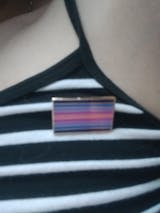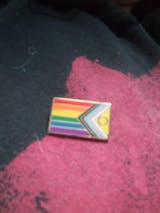
The Rainbow Pride Flag: A Symbol Born in 1978
Share
In 1978, a vibrant symbol emerged that would become one of the most recognisable icons of equality and acceptance in the world. The rainbow pride flag, with its bold stripes of colour, wasn't just a pretty design; it was a powerful statement of visibility, hope, and unity for the LGBTQIA+ community.
The Bloke Behind the Banner
The man responsible for this iconic flag was Gilbert Baker, an American artist and activist living in San Francisco during the late 1970s. Baker was deeply involved in the gay rights movement and had a background in sewing and design. When Harvey Milk, one of the first openly gay elected officials in the United States, challenged him to create a symbol for the community, Baker rose to the occasion with characteristic creativity and determination.
Baker believed the community needed its own symbol, something that belonged entirely to them, rather than borrowing symbols from other movements. The pink triangle, which had been reclaimed from its horrific use by the Nazis to identify gay men in concentration camps, was already being used, but Baker envisioned something more positive and life-affirming.
The Original Eight-Stripe Design
The very first rainbow flag wasn't the six-stripe version we know today. Baker's original 1978 design featured eight distinct colours, each carrying its own symbolic meaning. Hot pink represented sexuality, red stood for life, orange symbolised healing, yellow represented sunlight, green meant nature, turquoise stood for magic and art, indigo represented serenity, and violet symbolised spirit.
Baker and a team of volunteers hand-dyed and stitched the flags in the attic of the Gay Community Center in San Francisco. The process was labour-intensive, with each colour carefully chosen and applied. These original flags measured eight feet by four feet and were first displayed at the San Francisco Gay Freedom Day Parade on 25 June 1978.
From Eight to Six: The Evolution
The flag's design didn't stay static for long. Practical considerations soon forced changes to Baker's original vision. When the flag began gaining popularity and demand increased, mass production became necessary. However, hot pink fabric proved difficult and expensive to source commercially, so that stripe was dropped, creating a seven-stripe version.
The following year, in 1979, another change occurred. When the flag was hung vertically from San Francisco's street lamps, the middle stripe (turquoise) was hidden by the lamp post itself. To create better visual balance, the turquoise stripe was removed, and indigo was changed to royal blue, resulting in the six-stripe design we recognise today: red, orange, yellow, green, blue, and purple.
More Than Just Colours
What makes the rainbow flag so powerful isn't just its bright, eye-catching appearance—it's the deeper meaning woven into every stripe. The rainbow itself is a natural phenomenon that has symbolised hope, promise, and diversity across many cultures throughout history. Baker tapped into this universal symbolism whilst creating something uniquely meaningful for the LGBTQIA+ community.
The flag's strength lies in its inclusivity. Unlike symbols that might represent specific groups within the broader community, the rainbow embraces diversity in all its forms. Each colour represents a different aspect of human experience, whilst together they create something beautiful and complete.
A Global Symbol of Progress
From its humble beginnings in a San Francisco attic, the rainbow flag has become a global symbol of LGBTQIA+ rights and acceptance. It flies proudly at Pride marches from Sydney to London and from Auckland to Vancouver. In Australia, it's become particularly significant as our nation has progressed on marriage equality and anti-discrimination laws.
The flag serves as both a beacon of hope for those still fighting for acceptance and a celebration of how far we've come. Every time it's raised, it sends a message: love is love, diversity is beautiful, and everyone deserves to live authentically.
Today, Gilbert Baker's creation continues to inspire new generations of activists and allies, proving that sometimes the simplest ideas, like putting a rainbow on a flag can change the world.






